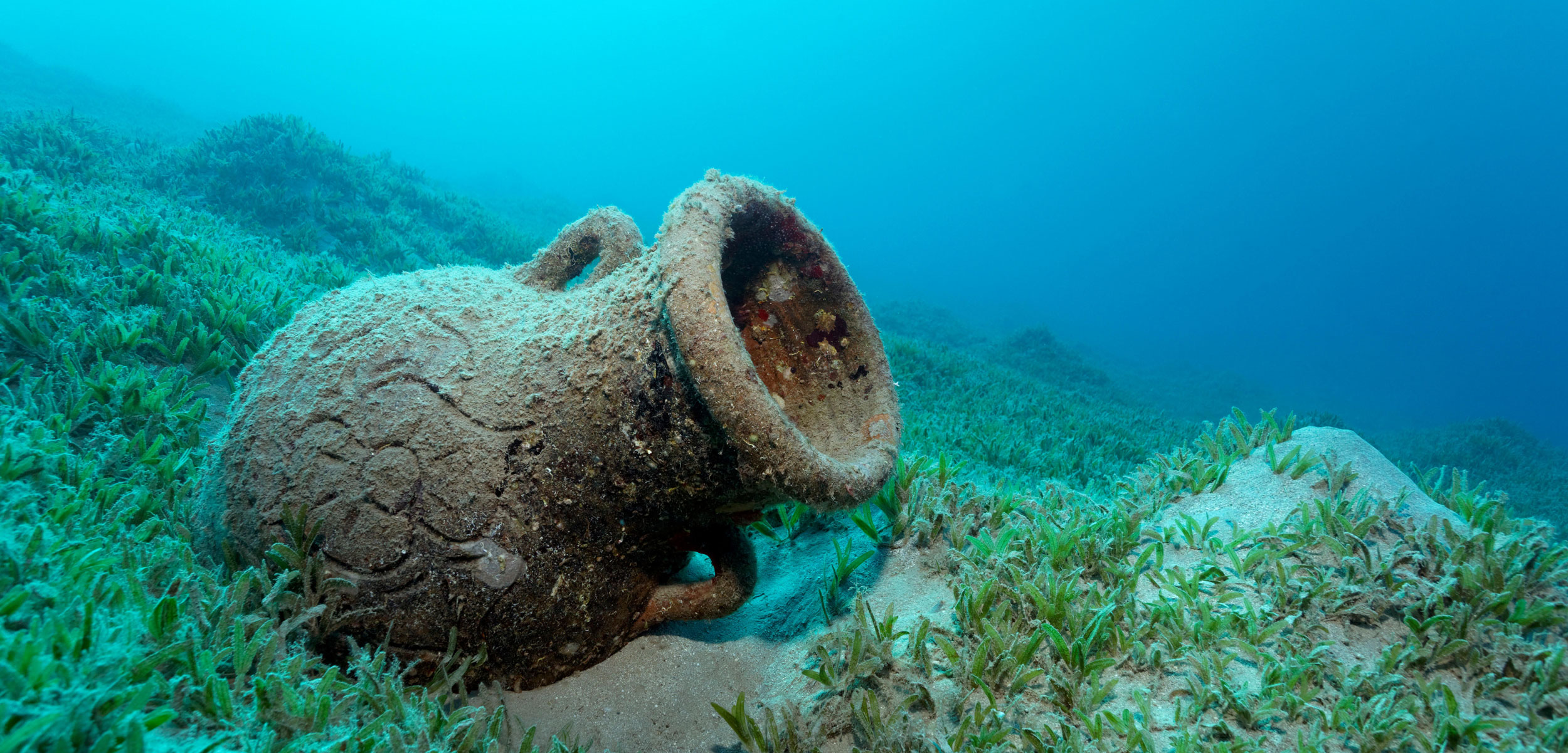Seagrass Safeguards Human History

Seagrass meadows can form a protective blanket over underwater archaeological sites, helping preserve artifacts such as this amphora found in the Red Sea near Hurghada, Egypt. Photo by Imagebroker/Alamy Stock Photo
Like security vaults, seagrass meadows help preserve underwater heritage.
Authored by by Gemma Conroy
Wordcount January 7, 2019 | 550 words, about 2 minutes
From storing carbon to guarding against ocean acidification, seagrass is fundamental to keeping ocean ecosystems in balance. But new research shows that seagrass meadows play another crucial, if overlooked, role: protecting shipwrecks and other underwater historical heritage.
Ancient weapons, prehistoric fishing tools, and textiles are just some of the items scientists have discovered buried beneath the protective cover of seagrass, says Oscar Serrano, a marine ecologist at Edith Cowan University in Australia. Until now, Serrano says, no one has investigated the cultural value of seagrass meadows, which “play an important role in revealing clues about the human past.”
But archaeological techniques can negatively impact seagrass meadows since excavation, sometimes with explosives, is used to access study sites.
To highlight the link between seagrass and archaeological preservation, Serrano and his colleagues compiled evidence from the literature and from consultations with archaeologists in Denmark, Australia, the United States, and around the Mediterranean. The team’s investigation revealed a clear pattern: some of the world’s best-preserved underwater archaeological sites are sealed beneath blankets of seagrass.
More:
https://www.hakaimagazine.com/news/seagrass-safeguards-human-history/
